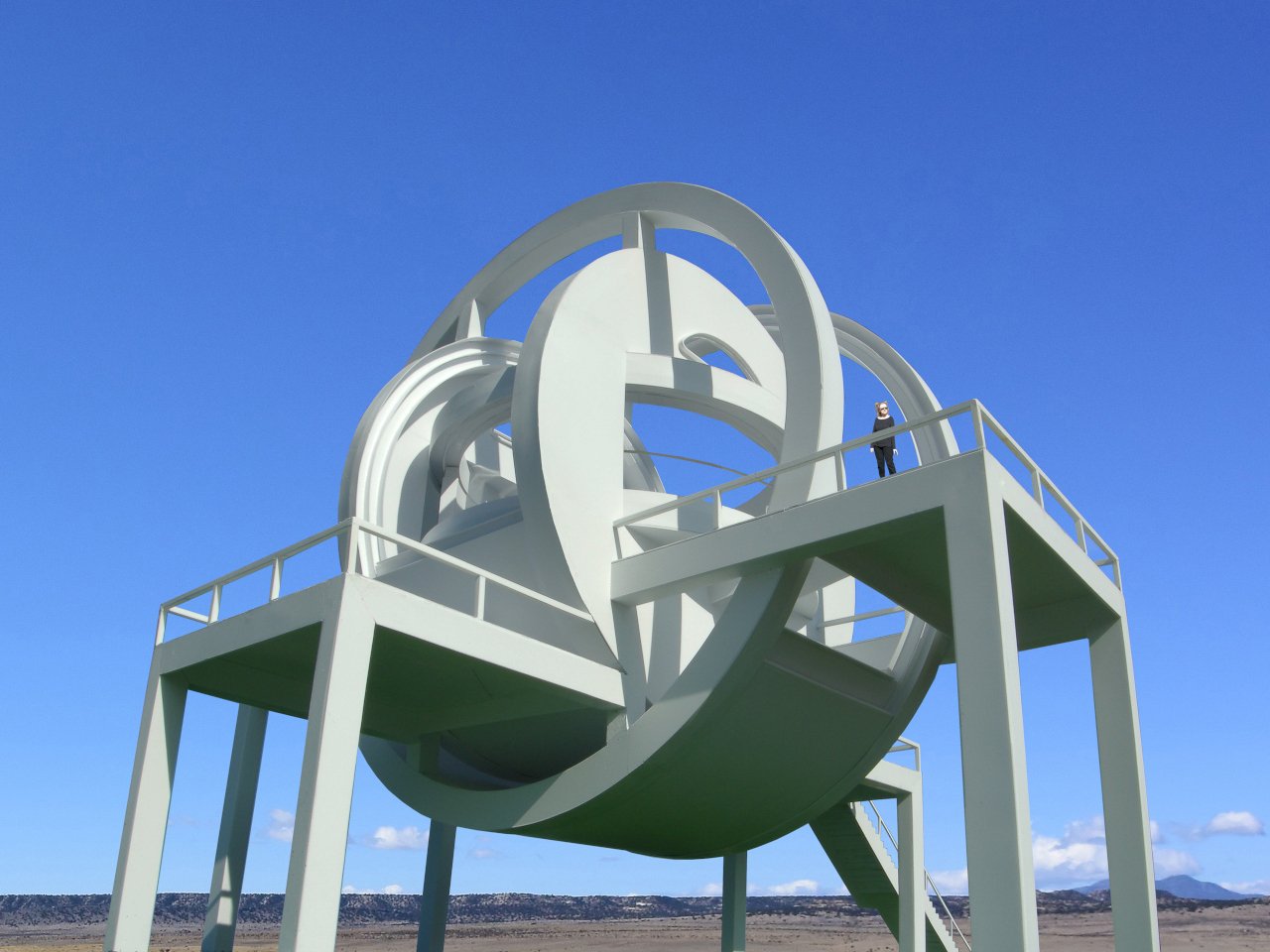Public art installations have traditionally asked visitors to admire from a respectful distance, creating beautiful but passive experiences. Most architectural pavilions follow similar patterns, offering fixed spaces and predetermined views that remain unchanged regardless of who visits. This approach misses opportunities for deeper connections between people and built environments.
Michael Jantzen’s Transmutation Observatory completely flips this script by creating a structure that visitors actively shape through their presence. This isn’t just a pavilion you walk through or art you observe quietly. It’s a living space that responds to human interaction and transforms based on visitor input.
Designer: Michael Jantzen
The observatory consists of three interlocking cylindrical forms of different sizes, supported by four horizontal planes resting on eight vertical columns. Each cylinder features two large, overlapping curved panels that slide around the forms in hundreds of possible configurations. The center cylinder sits horizontally, while others wrap around it.
What makes this structure revolutionary is its smartphone-controlled kinetic system. Visitors walking on the glass floor can point their phones at specific panels to activate small electric motors that slowly move the curved sections. This creates ever-changing architectural experiences where spatial volumes open and close in unexpected ways.
The participatory element transforms passive observation into active creation. Every visitor becomes a temporary architect, reshaping the space according to their curiosity or aesthetic preferences. Multiple staircases throughout the pavilion encourage exploration from different vantage points, ensuring the surrounding landscape is viewed through constantly shifting frames.
Solar sustainability powers the entire interactive experience through a large curved solar cell array mounted to one of the movable panels. When the structure doesn’t need electricity for kinetic functions, excess power flows into the local grid, benefiting the surrounding community. This integration exemplifies thoughtful eco-conscious design.
The visual impact is striking against open landscapes, with pale surfaces that catch and reflect changing light throughout the day. The interwoven cylinders create depth and complexity that shift dramatically as panels move, making the observatory a different structure from moment to moment.
Jantzen’s observatory represents significant evolution in public art and architecture, demonstrating how structures can become responsive to human needs rather than imposing fixed experiences. The project showcases interactive kinetic complexity while maintaining ecological responsibility through solar integration and community energy sharing.
The Transmutation Observatory proves that architecture doesn’t have to be static or predictable. By combining kinetic movement, user interaction, and sustainable technology, it creates spaces that are truly alive, constantly evolving based on human presence, making every visit a unique adventure in spatial discovery.
The post This Building Moves When You Point Your Phone at It first appeared on Yanko Design.

